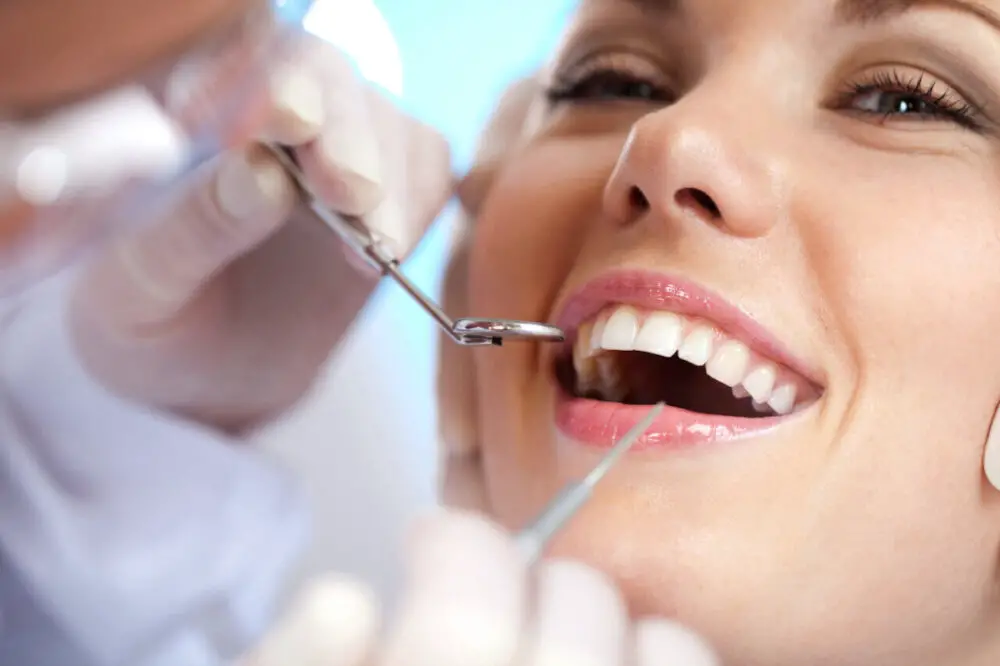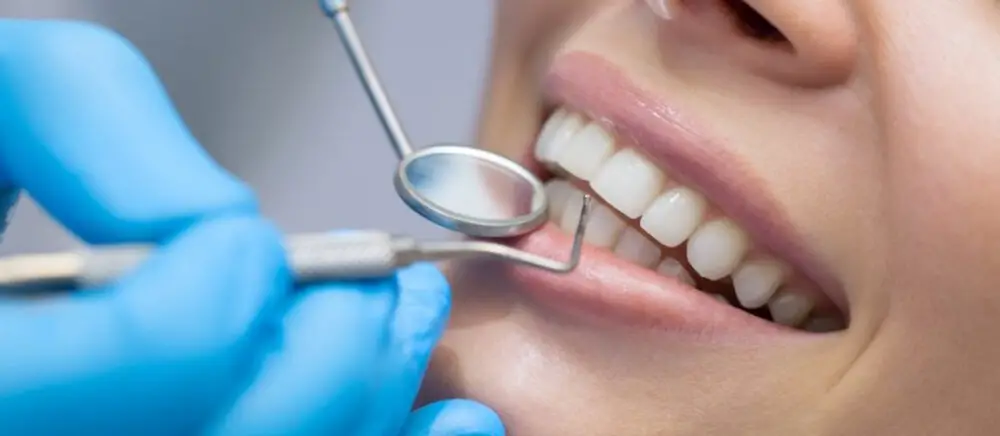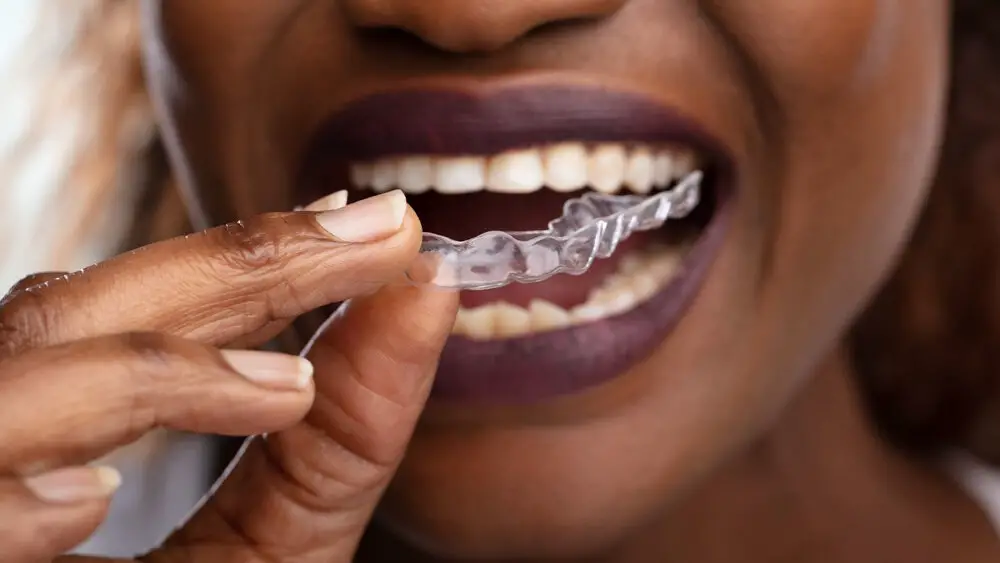Post Wisdom Teeth Removal: When is it Safe to Use Straws? Expert Advice

Getting your wisdom teeth removed is a common procedure that many people undergo. While it is a routine surgery, it still requires proper care and attention to ensure a safe and speedy recovery. One question that often arises after the surgery is when it is safe to start using straws again. Drinking through a straw can create suction in the mouth, which can cause complications during the healing process. As an expert in oral health, I am here to provide you with advice on when it is safe to use straws after wisdom teeth removal. It is important to note that every individual’s healing process is unique. The recovery time may vary depending on the complexity of the procedure and the individual’s health. Generally, it takes about a week for the initial healing process to occur, and the gums will take several weeks to fully heal. During this time, it is recommended that you avoid using straws, as the suction created by the straw can dislodge the blood clot that forms in the socket, causing a painful condition called dry socket. In the following paragraphs, I will provide more detailed advice on when it is safe to use straws after wisdom teeth removal.
Wisdom teeth removal is a common dental procedure that involves the extraction of the third molars located at the back of the mouth. The surgery is performed under local or general anesthesia and requires the use of specialized tools to remove the teeth from the jawbone. Patients may experience pain, swelling, and bleeding after the procedure, which can be managed with painkillers and ice packs. Recovery usually takes several days to a week and involves a soft diet, avoiding smoking or drinking alcohol, and limiting physical activity. It is important to follow the aftercare instructions provided by the dentist to prevent complications such as dry socket, infection, or delayed healing. The use of straws should be avoided for the first few days after surgery as it can dislodge the blood clot and delay the healing process.
It is of utmost importance to follow post-surgery instructions after wisdom teeth removal. These instructions are given by the dentist or oral surgeon to ensure a smooth and speedy recovery. Failure to follow these instructions can lead to complications such as dry socket, infection, and delayed healing. One crucial aspect of these instructions is avoiding the use of straws for a specific period. Using straws can create negative pressure in the mouth, which can dislodge the blood clot that forms in the extraction site, causing a condition called dry socket. By following the post-surgery instructions, patients can reduce the risk of complications, ensure a comfortable recovery, and achieve optimal oral health.
Why are Straws a Concern After Wisdom Teeth Removal?

After Wisdom Teeth Removal, it is essential to take proper care of the surgical site to ensure quick healing and prevent any complications. One of the critical factors to consider during this period is the use of straws. Straws require a sucking motion that can create negative pressure in the mouth, which can cause a condition known as dry socket. Dry socket is a painful condition that occurs when the blood clot that forms over the surgical site becomes dislodged, exposing the underlying bone and nerves. Using a straw after wisdom teeth removal can dislodge the blood clot and delay the healing process, leading to infections and other complications. Therefore, it is essential to avoid straw use for at least a week after surgery to allow for proper clot formation and healing. Apart from dry socket, using a straw after wisdom teeth removal can also cause other complications such as swelling, bleeding, and infection. The sucking motion required to use a straw can cause the muscles in the jaw to move, leading to irritation and swelling. Additionally, the suction can disrupt the blood vessels around the surgical site, leading to bleeding and infection. To avoid these complications, it is best to stick to soft foods and avoid using straws and other items that require sucking motions for at least a week after wisdom teeth removal. This precaution can ensure a speedy recovery and prevent any complications that may arise from the use of straws.
Using straws after wisdom teeth removal can cause complications due to the suction force created when drinking. This suction force can dislodge the blood clot that forms in the socket where the tooth was extracted. When the blood clot is dislodged, it exposes the sensitive nerves and bone in the socket, which can lead to a painful condition called dry socket. Additionally, the suction force can also delay the healing process by interfering with the formation of new blood vessels and tissues in the socket. Therefore, it is crucial to avoid using straws until the socket has fully healed to prevent any complications and ensure a smooth recovery.
After a wisdom teeth removal procedure, the healing process can be a bit tricky. One of the most common complications that can arise is dry socket. This occurs when the blood clot that forms in the socket where the tooth was extracted gets dislodged or dissolves, leaving the bone and nerves exposed. This condition can result in severe pain, bad breath, and an unpleasant taste in the mouth. Delayed healing is another potential risk, which can be caused by poor oral hygiene, smoking, or certain health conditions. It can lead to swelling, infection, and prolonged discomfort, extending the recovery period. To avoid these risks, it is best to follow all the post-operative instructions provided by your dentist or oral surgeon, including avoiding straws for the recommended period of time.
Avoiding straws and other sucking motions is crucial after wisdom teeth removal as it can lead to a painful condition called dry socket. Dry socket occurs when the blood clot that forms in the extraction site is dislodged or dissolves, exposing the underlying bone and nerves to air, food, and fluids. This can cause severe pain, bad breath, and delayed healing. Using straws or engaging in other sucking motions such as smoking or spitting can create negative pressure in the mouth, which can dislodge the blood clot and increase the risk of developing dry socket. Therefore, it is essential to follow your dentist’s instructions and avoid using straws or engaging in sucking motions until the extraction site has completely healed.
When is it Safe to Use Straws?

After wisdom teeth removal, it is recommended to avoid using straws for at least a week. The suction created while using a straw can dislodge the blood clot that forms in the extraction site, leading to a painful condition called dry socket. Dry socket occurs when the blood clot is prematurely removed, exposing the underlying bone and nerves. The condition can delay the healing process and cause intense pain and discomfort. Therefore, it is crucial to follow the dentist’s instructions and avoid using straws or other sucking motions, such as smoking or spitting, until the extraction site has healed adequately. Once the dentist confirms that the extraction site has healed correctly, it is safe to use straws again. However, it is advisable to use caution and avoid overexertion while using straws. A gentle suction is enough to draw the liquid into your mouth, and excessive suction can still lead to dry socket, even after the extraction site has healed. If you experience any discomfort or pain while using straws, it is best to stop immediately and contact your dentist. Following these guidelines can help you enjoy a comfortable and speedy recovery after wisdom teeth removal.
The general timeline for recovery after wisdom teeth removal varies from person to person, but typically takes about 7-10 days. The first 24-48 hours are the most critical, as this is when bleeding and swelling are most likely to occur. Patients are advised to rest and avoid strenuous activity during this time. Pain and discomfort can be managed with medication prescribed by the dentist or oral surgeon. After the first few days, the swelling should begin to subside and patients can gradually introduce soft foods back into their diet. While it may be tempting, patients should avoid using straws for at least a week after surgery, as the suction can dislodge the blood clot and delay healing. Overall, it is important to follow the post-operative instructions provided by your dentist or oral surgeon to ensure a smooth and successful recovery.
After wisdom teeth extraction, it is essential to take proper care of the surgical site to promote healing and avoid complications. The recovery time varies from person to person but generally takes around seven to ten days. It is safe to resume normal activities such as light exercise and driving after 24 hours, but strenuous activities should be avoided for a few more days. However, when it comes to using straws, it is recommended to wait at least 72 hours, as the suction action can dislodge the blood clot forming in the socket and cause a condition known as dry socket, which can be painful and delay healing. Therefore, it is crucial to follow the post-operative instructions given by the dentist or oral surgeon to ensure a smooth and speedy recovery.
Following the dentist’s instructions after wisdom teeth removal is crucial for a successful recovery. It is essential to avoid using straws for at least a week after the surgery as the sucking motion can dislodge the blood clot and interfere with the healing process. Checking in with the dentist before using straws is also recommended to ensure that the healing process is going smoothly and there are no complications. Neglecting to follow these instructions can lead to a painful and prolonged recovery, as well as the risk of developing dry socket, a painful condition where the blood clot is dislodged, exposing the bone and nerves. Therefore, it is essential to follow the dentist’s guidelines and check-in before using straws to ensure a smooth and successful recovery.
Alternatives to Straws During Recovery

After wisdom teeth removal, using straws can be detrimental to the healing process and lead to complications such as dry socket. Fortunately, there are many alternatives to using straws that can make the recovery process more comfortable while still allowing you to stay hydrated and nourished. One option is to use a spoon to drink liquids. Simply tilt your head back slightly and slowly pour the liquid into your mouth using the spoon. You can also sip directly from a cup or glass, being careful not to create a suction that could dislodge the blood clot. Another alternative is to use a reusable silicone straw that is flexible and gentle on the mouth. These straws are also eco-friendly and can be washed and reused many times. In addition to using alternative drinking methods, there are other ways to help aid in the recovery process after wisdom teeth removal. Eating soft foods such as pureed soups, mashed potatoes, and smoothies can help avoid any irritation or damage to the surgical site. Applying an ice pack to the cheek for 20 minutes at a time can also help to reduce swelling and discomfort. It is important to avoid smoking, drinking alcohol, and using any products that contain nicotine or tobacco as they can delay the healing process and increase the risk of complications. By following these guidelines and using alternative methods for drinking, you can ensure a smooth and successful recovery after wisdom teeth removal.
Aside from using straws, there are other options for drinking and eating during recovery after wisdom teeth removal. One option is to consume food and drinks that are soft and easy to swallow, such as mashed potatoes, soups, and smoothies. Another option is to use a spoon to sip liquids, which can be less risky than using a straw. It’s also important to avoid hot or cold foods and drinks, as well as crunchy or chewy foods, as they can irritate the extraction site. By following these guidelines, patients can ensure a smooth and comfortable recovery after wisdom teeth removal.
After undergoing wisdom teeth extraction, it is recommended to consume soft foods and liquids that are easy to swallow and will not irritate the surgical site. Some examples of safe soft foods include mashed potatoes, scrambled eggs, oatmeal, yogurt, and smoothies. It is important to avoid hard or crunchy foods, as they can cause discomfort and delay the healing process. Additionally, drinking plenty of water and other clear liquids, such as broth or juice, is crucial to stay hydrated and promote healing. However, it is crucial to avoid using straws during the first few days of recovery, as the suction can dislodge the blood clot and cause dry socket, which can be extremely painful and prolong healing time.
Maintaining good oral hygiene is crucial during recovery after wisdom teeth removal. This is because the extraction site is vulnerable to infection, and proper cleaning can help prevent complications. It is recommended to brush gently around the extraction site and rinse with saltwater to help reduce swelling and prevent infection. It is also important to avoid using straws, as the sucking motion can dislodge the blood clot that forms in the socket, leading to a painful condition called dry socket. By taking care of your oral hygiene during recovery, you can ensure proper healing and avoid any further discomfort.
Tips for a Smooth Recovery After Wisdom Teeth Removal

Wisdom teeth removal can be a daunting experience for many, but the good news is that there are several tips you can follow to ensure a smooth recovery. First and foremost, it’s important to follow your dentist’s post-operative instructions carefully. This may include avoiding certain foods, taking pain medication as prescribed, and applying ice packs to your cheeks to reduce swelling. It’s also important to get plenty of rest and avoid strenuous activities for the first few days after surgery to give your body time to heal. Another important aspect of recovery after wisdom teeth removal is proper oral hygiene. While brushing and flossing may be uncomfortable at first, it’s important to keep your mouth clean to prevent infection. Your dentist may also recommend using a saltwater rinse to help clean and soothe your mouth. Additionally, it’s important to avoid smoking or using tobacco products as this can slow down the healing process and increase the risk of infection. By following these tips and taking care of yourself after wisdom teeth removal, you can ensure a smooth and comfortable recovery.
Post-surgery care is crucial for a successful recovery after any surgical procedure, including wisdom teeth removal. Best practices for post-surgery care include resting adequately, taking prescribed medications as directed, avoiding smoking, and following a soft food diet. While it is important to stay hydrated, patients should avoid using straws for at least 24 hours after surgery to prevent dislodging the blood clot that forms in the extraction site. Proper oral hygiene is also essential, and patients should gently rinse their mouth with saltwater and avoid brushing the extraction site for the first few days. By following these best practices, patients can help ensure a smooth recovery and minimize the risk of complications after wisdom teeth removal surgery.
After wisdom teeth removal, it is crucial to prioritize rest, hydration, and pain management. Resting allows your body to recover and heal properly, reducing the risk of complications. Additionally, staying hydrated helps to prevent dry socket, a painful condition that can occur after the removal of a tooth. Pain management is also crucial, as it allows you to manage any discomfort or pain you may experience during the recovery period. This can include taking prescribed medication, using ice packs, and avoiding activities that may exacerbate the pain. Overall, taking these steps can help to ensure a smooth and successful recovery after wisdom teeth removal.
After wisdom teeth removal, it is important to follow a few tips to avoid complications and promote healing. Firstly, avoid using a straw for at least 24-48 hours after the procedure as it can create suction that can dislodge the blood clots formed in the socket, leading to dry socket. Secondly, stick to a soft diet for the first few days and avoid spicy, acidic, and crunchy foods that can irritate the surgical site. Thirdly, gently rinse your mouth with warm salt water a few times a day to keep the area clean and promote healing. Lastly, avoid smoking or using any tobacco products for at least a week as they can delay healing and increase the risk of infection. By following these simple tips, you can ensure a smooth and quick recovery after wisdom teeth removal.
Avoiding straws and other sucking motions is a crucial aspect of post-wisdom teeth removal recovery. Sucking motions can cause dry sockets, which are extremely painful and can prolong the healing process. The negative pressure created by sucking can dislodge the blood clot that forms over the socket, exposing the nerves and bone underneath. This can lead to infection and delay the healing process. It’s important to adhere to your dentist’s advice and avoid using straws, smoking, or any other sucking motions for at least a week after surgery. Instead, opt for a spoon or cup to drink liquids and eat soft, non-chewy foods. Following these guidelines will ensure a smooth and speedy recovery.
It is crucial to follow your dentist’s post-operative instructions after wisdom teeth removal to avoid any complications or delays in healing. One of the common concerns is the use of straws, which can dislodge the blood clot and lead to dry socket. Therefore, it is necessary to avoid using straws for at least 24-48 hours after the surgery. However, every individual’s recovery is unique, and it is best to consult your dentist before resuming any normal activities, including using straws. They can provide you with personalized recommendations based on your specific case and ensure that you have a smooth and successful recovery. Remember, taking care of your oral health after a dental procedure can prevent future complications and ensure a healthy smile.
After the wisdom teeth removal procedure, it’s crucial to take care of oneself for a smooth and successful recovery process. This includes following all the instructions provided by the dentist or oral surgeon, such as avoiding hard or crunchy foods, not smoking, and refraining from using straws. It’s essential to take the recovery process seriously and prioritize self-care, as it can significantly impact the outcome of the procedure. Taking care of oneself during the recovery process can help prevent complications, reduce pain and swelling, and promote faster healing. Remember, the recovery process is temporary, and taking the necessary precautions can ensure a smooth and successful outcome in the long run.
Conclusion

In conclusion, the timing of when it is safe to use straws after wisdom teeth removal is crucial in preventing complications such as dry socket. While there is no universal agreement on the exact timeline, it is recommended to avoid using straws for the first 24-48 hours after the procedure and gradually reintroduce them as the healing process progresses. It is also important to follow the specific instructions given by your dentist or oral surgeon to ensure a smooth and successful recovery. Remember to prioritize rest, hydration, and a soft food diet during this time. With proper care and patience, you can ensure a comfortable and speedy recovery after wisdom teeth removal.







